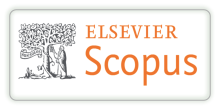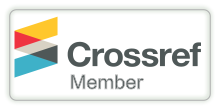DEMYSTIFYING LEADERSHIP: UNVEILING THE STYLE OF INDIRA GANDHI’S LEADERSHIP
DOI:
https://doi.org/10.29121/shodhkosh.v5.i1.2024.6518Keywords:
Gender, Unveiling, Demystifying, Leadership, EqualityAbstract [English]
In Indian politics, democratic norms and values always remain unassailable. It is worth mentioning here that citizens have enjoyed their rights and duties without any obstacles since the country's independence. However, the quality of leadership remains an integral fabric of Indian democracy. Hence, India has been experiencing the rule of many robust leaders. Even Indira Gandhi was amongst the leaders who had heard her own voice, not others. She was appointed as the prime minister of India for the periods from 1966 to 1977 and 1980 to 1984. Nonetheless, it gained importance in Indian politics, where female politicians advocated for gender equality and served as the prime minister.
References
Bennis, Warren G., On Becoming A Leader, Hachette Book Group, New York, 2009. DOI: https://doi.org/10.1002/ltl.361
Stogdill, Ralph M., Leadership, Membership and Organisation, Office of Naval Research, Arlington, 1950. DOI: https://doi.org/10.1037/h0053857
Carlyle, Thomas, On Heroes, Hero-Worship, and the Heroic in History, James Fraser, London, 1841.
Northouse, Peter G., Leadership: Theory and Practice, Thousand Oaks, California, 2022.
Sinha, Niroj, Women in Indian Politics, Gyan Publishing House, New Delhi, 2006.
Mehta, Prayag, Election Campaign: Anatomy of Mass Influence, National Publications House, Delhi, 1975.
Das, Gurcharan, India Unbound, Penguin Books, New Delhi, 2000.
Raghavan, Srinath, 1971: A Global History of the Creation of Bangladesh, Harvard University Press, London, 2013
Downloads
Published
How to Cite
Issue
Section
License
Copyright (c) 2024 Dr. Lucky Chetia, Dhrubajyoti Saikia

This work is licensed under a Creative Commons Attribution 4.0 International License.
With the licence CC-BY, authors retain the copyright, allowing anyone to download, reuse, re-print, modify, distribute, and/or copy their contribution. The work must be properly attributed to its author.
It is not necessary to ask for further permission from the author or journal board.
This journal provides immediate open access to its content on the principle that making research freely available to the public supports a greater global exchange of knowledge.































